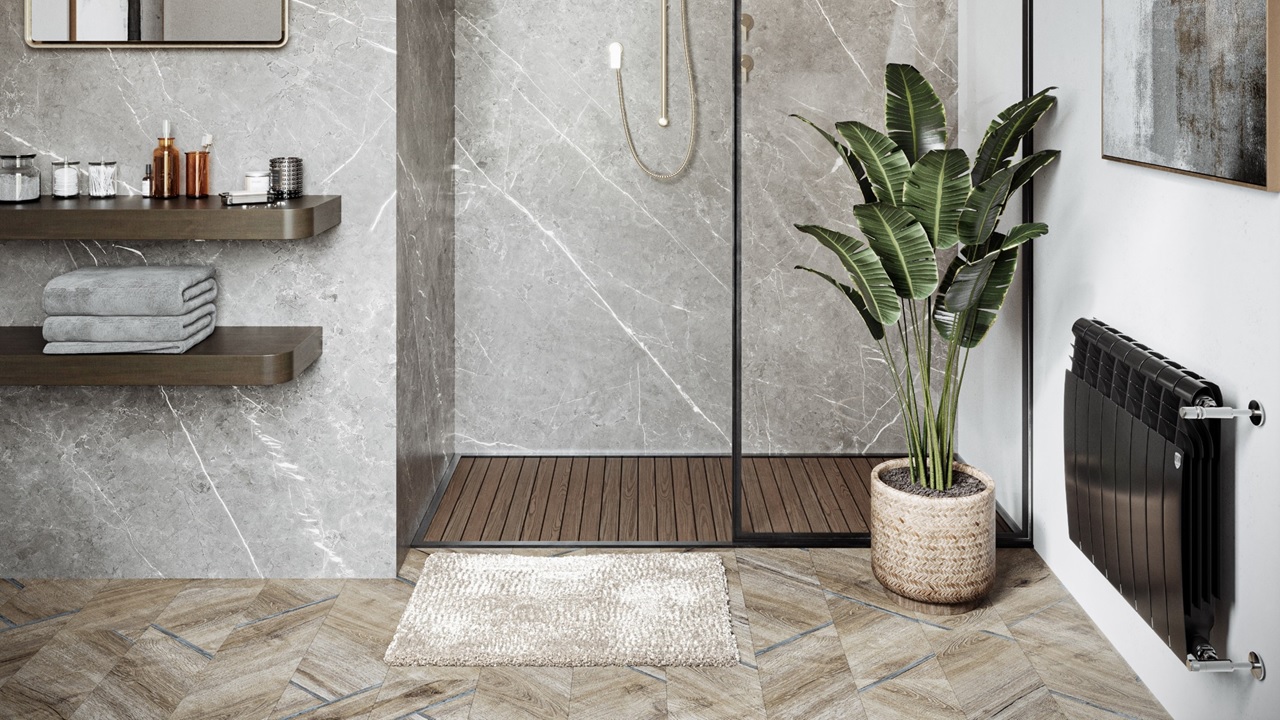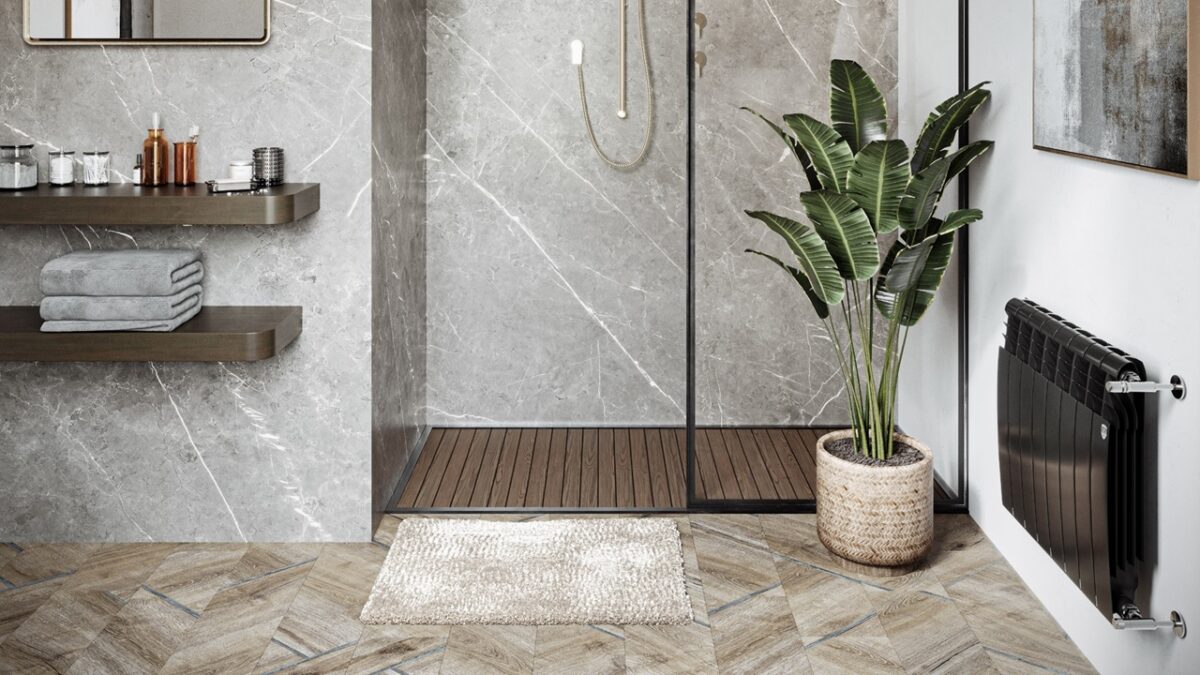
Have you been considering vinyl flooring for your bathroom but aren’t sure where to start? In this guide, you’ll learn how to choose the perfect flooring solution, get installation tips, and learn the pros and cons of vinyl flooring for bathrooms.
Nail your luxury vinyl bathroom flooring with these handy tips!
Choosing the Perfect LVT for Your Bathroom
Luxury vinyl tile flooring (LVT) is built specifically to mimic the look of tile floors. If you want to choose the perfect waterproof luxury vinyl flooring, though, you’ll have to consider a few factors.
Here are some things to think about when choosing LVT for a bathroom:
- Style. The style of your bathroom tile should complement the rest of your bathroom’s design.
- Quality. Look for tiles from a trusted manufacturer to avoid getting tiles that aren’t cut square and result in a tough installation process.
- Budget. Choose something that fits your current budget and price point. Thankfully, you’ve got plenty of options to choose from!
- Wear Layer. The wear layer you choose will vary depending on how much foot traffic you expect in the bathroom and varies from 0.3 mm – 0.7 mm.
- Bathroom size. Large tiles work great for master bathroom flooring. Vinyl plank could work better for a small, narrow bathroom.
Installing Vinyl Bathroom Flooring with Expertise
Installing waterproof vinyl flooring can be pretty easy, whether you’re a homeowner or a designer. Be sure to use the right trowel and glue for the job (per manufacturer instructions), install the flooring at the right temperature, and give LVT tiles time to acclimate for a couple of days before beginning the installation process.
Keep in mind: there are two types of vinyl kitchen/bathroom flooring, and installation will vary depending on what kind you use. If you’re using LVT that requires glue, ventilate the area before you start!
Benefits of LVT in Humid Spaces like Bathrooms
Slip-resistant vinyl flooring works great in humid spots like bathrooms. Here are some LVT flooring benefits:
- 100% waterproof
- Comfort underfoot
- Slip-resistant
- Low maintenance
- Affordable pricing
- Multiple designs to choose from
LVT flooring maintenance is very straightforward – keep it clean, wash it with non-abrasive cleaners, and damp mop without flooding the floor.
Disadvantages of LVT
There are a few vinyl flooring disadvantages you may want to consider:
- Removal challenges
- Potential discoloration/fading
- Eco-friendliness concerns
Not all of these disadvantages are true across the board: there are eco-friendly vinyl flooring options available.
Vinyl Plank Flooring FAQs for Your Bathroom
Here are some frequently asked questions about vinyl plank flooring:
- Will my flooring dent if I drop something heavy on it? It can, but if you take precautions (like furniture pads/sliders/rugs), you can prevent dents.
- Is vinyl flooring the same as linoleum? No – linoleum needs to be professionally installed and re-sealed every year, whereas vinyl flooring is DIY-friendly and doesn’t require regular maintenance.
- What is LVP? In the same way that LVT stands for “luxury vinyl tiles,” LVP stands for “luxury vinyl planks.” LVP typically looks like wood, while LVT looks like tile.
- What is LVF? This is an umbrella term that means “luxury vinyl flooring” and can refer to either LVT or LVP.
- How do I cut the tiles? Use a sharp utility knife and a straight edge to cut vinyl flooring.
- Is plank installation different? The instructions above were for LVT, which tends to be square bathroom flooring. Vinyl plank flooring would require a different installation process.
Visit the LX Hausys Website for Vinyl Flooring Options
Would you like to see what LVT options are available for your bathroom? Check out the LX Hausys website for a number of beautiful flooring choices, or contact us today for more information.

